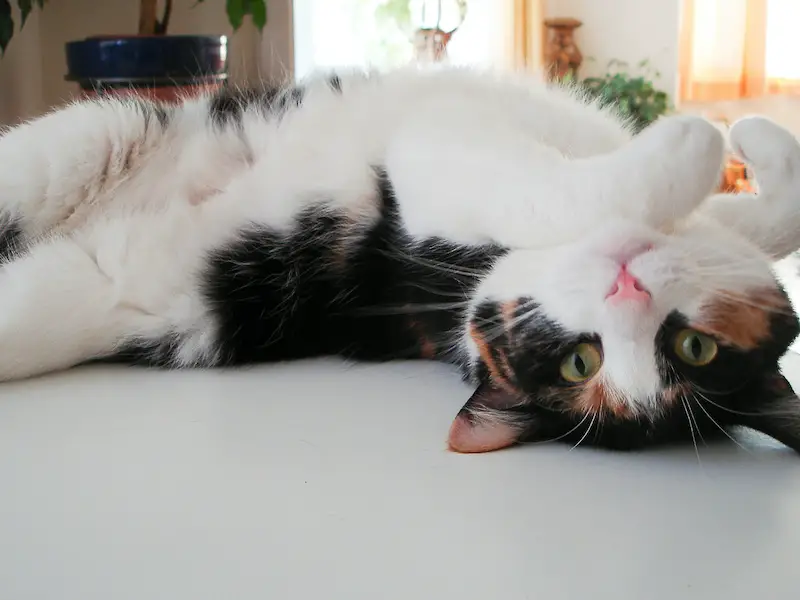Do you ever wonder what your cat is trying to tell you when it engages in certain behaviors? Wonder no more! Here are the 10 most common cat behaviors and what they mean. Some are simply cute expressions of love, while others may be signs that your cat is feeling sick or stressed out. So read on to learn what’s going on in your furry friend’s mind!
Here are some popular terms used in social media to describe funny things cats do:
1. Purring – When a cat purrs, it is usually a sign of contentment and happiness. However, cats also sometimes purr when they are nervous or agitated. “Purring” is one of the most distinctive things about cats and can be extremely relaxing for humans.
2. Sleeping – Cats sleep a lot! In fact, they spend around 16 hours per day sleeping on average. While this may seem like a lot, cats need all that sleep to help them rest and rejuvenate their energy levels.
3. Grooming – Cats groom themselves by licking their fur with their tongues. If you’ve ever noticed, a cat’s tongue is has coarse hairs on it – much like a comb or brush. This helps to keep their fur clean and healthy, as well as providing cats with a way to bond with other cats or humans.
4. Eating – Unlike dogs, cats are obligate carnivores, meaning that they must consume meat in order to survive. Cats can be picky eaters, so try a variety of foods with your cat – from wet food to dry food and even “moist varieties,” your cat will tell you what he/she likes. Many cat owners also believe that cats prefer to eat out of shallow bowls or dishes to avoid “whisker fatigue.”
5. Playing – Cats love to play! Whether they’re chasing after a toy or stalking prey, cats never seem to tire of playing games and having fun. Many cats also enjoy playing games like fetch or tag with their human companions. Play is integral to a happy and healthy kitty – so be sure to provide plenty of toys. Look for toys that your cat can engage with alone – but also be sure to get interactive toys to play together with your cat.

6. Meowing – Cats meow for many different reasons: to greet people, to call for attention, to show affection, or to express their needs. Meowing is one of cats’ most distinct and well-known behaviors – and it’s said that they mostly meow for the benefit of humans. Cats usually communicate with other cats in other non-verbal ways.
7. Shedding – All cats shed, though some cats shed more than others. Shedding helps cats to get rid of old or damaged fur and keep their coats healthy and looking good. Brush your cat gently. If you notice any matting, be sure to remove mats by using a clipper designed for pets. Never use scissors or you could cut your kitty resulting in a potentially serious injury. Mats only get worse, so if you have a long-haired cat or a cat that mats easily – be sure to maintain a regular grooming schedule.
8. Hissing – When cats hiss, they are usually trying to communicate fear, anger, or aggression. This behavior is often seen in cats who feel threatened or are defending themselves. Don’t tease cats that are hissing or otherwise agitated, rather leave the cat to relax. Remove anything that might be agitating your cat and let her calm down.
9. Scratching – Cats scratch furniture, carpets, and other surfaces for a variety of reasons: to mark their territory, to remove the dead outer layer of their claws, to stretch their paws, or simply because it feels good! To minimize damage to furniture, provide plenty of scratching surfaces.
10. Knocking things over – Cats are notorious for knocking things over, whether it’s a vase, pens on a desk, a stack of papers, or even a cup of coffee or water. While this behavior can be frustrating for cat owners, it is often simply a result of cats’ natural curiosity and playfulness. If your cat knocks stuff over, congratulations – your cat is in working order!
That’s it – the 10 most common cat behaviors and what they mean. As you can see, some of them are just expressions of love or happiness, while others may be signs that your kitty is feeling sick or stressed out. If you see your cat engaging in any of these behaviors, take a closer look and try to figure out what might be going on. And if you have any questions about what your cat is trying to tell you, don’t hesitate to reach out to us! We’re always here to help owners understand their cats better. What do you think? Did we leave anything important off the list? Let us know in the comments below!






